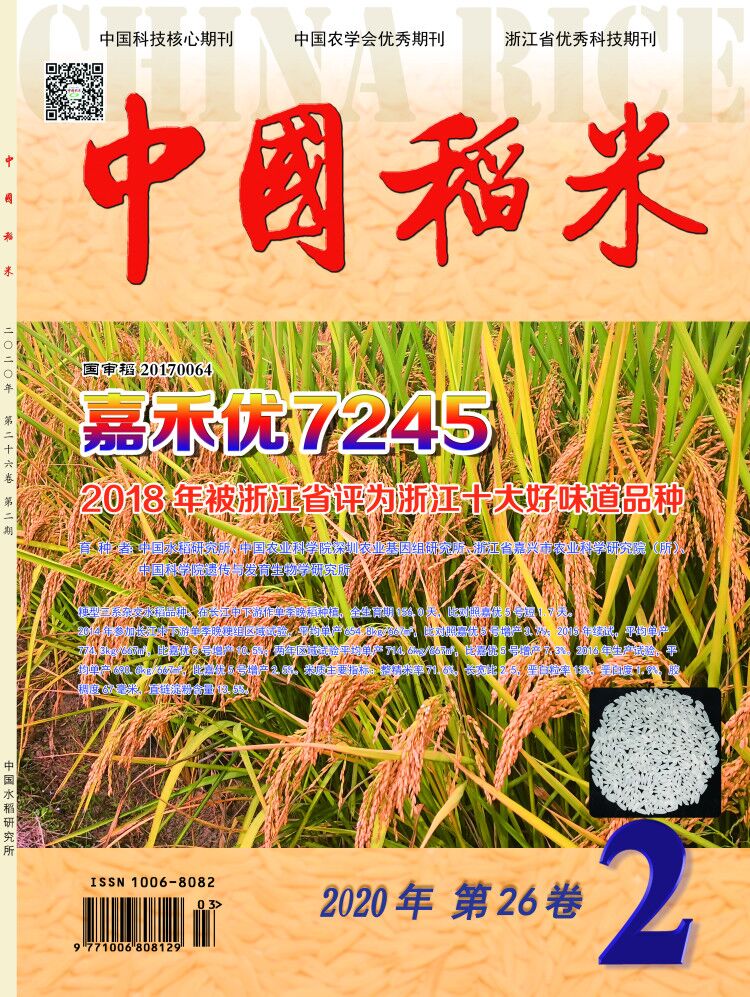An experiment was carried out to study the effects of salt stress on processing quality, appearance quality, nutritional quality, starch viscosity spectrum characteristic value and taste quality of different rice varieties, under different levels of soil salt content (S0, 0 g/kg; S1, 1.5 g/kg; S2, 3.0 g/kg; S3, 4.5 g/kg; S4, 6.0 g/kg) , using Changnonggeng 8 and Nangeng 9108 as materials. The results indicated that brown rice rate and milled rice rate decreased gradually with the increase of salt stress intensity, and head milled rice rate showed V-shape change. Salt stress had no significant effect on chalkiness degree and transparency, but chalky rice rate decreased significantly under strong stress treatment(S4). With the increase of salt stress level, the RVA profile characteristic values did not increase or decrease linearly, but showed the V-type changes (peak viscosity, hot viscosity and breakdown viscosity) or inverted V-type changes(setback viscosity, consistence viscosity and gelatinization temperature), the lowest or highest values appeared at S2 treatment. The effects of salt stress and interaction effects on taste value and related parameters were significant or very significant, but the effects of varieties were not significant. With the increase of salt stress, the taste value and related parameters of rice showed the V-type changes (taste value, appearance, viscousness and balance degree) and inverted V-type change(hardness). Correlation analysis demonstrated that rice taste value was significant or extremely significant positive correlated with peak viscosity, trough viscosity and breakdown, and significant negative correlated with brown rice rate, protein content, setback viscosity, consistence viscosity and gelatinization temperature.

